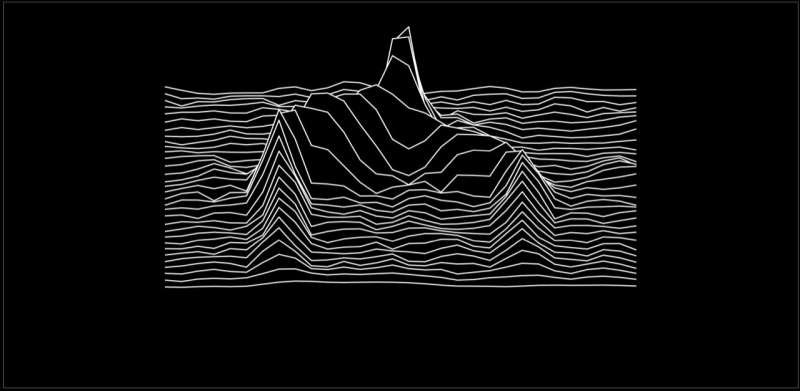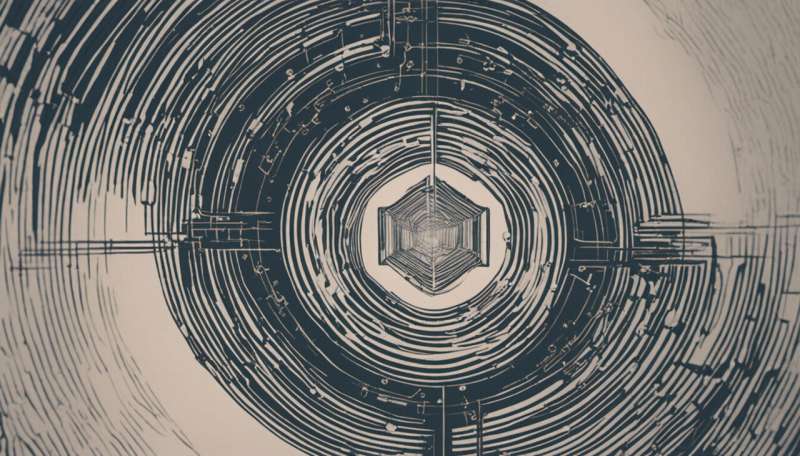A quantum pump without a crank

Pumps, in a nutshell, are devices that use cyclic motion to attain the steady transport of some cargo. In a bicycle pump, the repeated up and down strokes of a piston create air flow. In a Archimedean screw pump, water is transferred between reservoirs by turning a crank. Related concepts have been explored as well in quantum systems, in particular for transporting electrons one by one through solid-state materials, thereby generating a quantized current.
Now, a team led by Dr. Tobias Donner, a Senior Scientist in the group of Prof. Tilman Esslinger at the Institute for Quantum Electronics, adds a surprising twist to the story. Writing in Nature, they report a quantum pump that does not require any periodic driving from the outside—a pump winding without the crank.
The search for new puzzles
The team of Esslinger and Donner works not with electrons in solid-state materials, but instead with atoms confined to complex structures created by intersecting laser beams. Such synthetic crystals have the advantage that both the atoms and the crystal lattice can be controlled with exquisite precision and great flexibility. The platform can then be harnessed either to gain a better understanding of known effects, or to generate scenarios in which quantum systems behave in unforeseen ways, ideally pointing to new phenomena of quantum physics. And this is precisely what the team achieved in the work now reported.
A key ingredient of their experiment is an optical cavity in which the synthetic crystal is formed. The cavity serves to mediate a coupling between the atoms and the light fields involved. Moreover, photons leaking out of the cavity constitute a dissipation channel, over which the experimenters have excellent control as well. Such a system including dissipation is known as an open quantum system. Importantly, when suitably controlled, dissipation can be an asset rather than a nuisance: In 2019 members of the Esslinger group found that photons leaking from the cavity can couple different configurations of a synthetic crystal, giving rise to dynamics oscillating between these configurations. That work was published in Science in 2020.

Advancement by going in circles
The big surprise leading to the now-published work was the experimental observation that the atoms trapped in the synthetic crystal structure started to move. Carrying out several measurements and performing numerical simulations, the researchers identified the mechanism behind the atomic motion: The synthetic crystal was periodically winding between different structures, such that the center of mass of the atoms is spatially shifted by a fixed amount in each cycle—in intriguing analogy to the upwards chiral motion in an Archimedean pump. Carefully analyzing the light field leaking from the cavity, the ETH physicists gained detailed insights into the mechanism and characterized the interplay between cavity dissipation and quantized pumping.
Who turns the crank?
What is unique in these experiments compared to previous realizations of quantum pumps—and in contrast to how we picture a pump in general—is that a particle current is observed without any external periodic driving. What drives the current is the dissipation from the cavity, leading to "self-oscillating" pumping. In this context it is important that the atom configurations between which the system oscillates are distinct on a very fundamental level, in that they possess different so-called topologies. In practical terms this means that the demonstrated transport mechanism should be stable against external perturbations and also robust with regard to the detailed form of the pumping protocol.
These are exciting findings. Topology and open quantum systems are both highly active areas of modern physics. The connection between the two promises to provide not only a testbed for quantum many-body theory but also a practical tool for realizing exotic states of quantum matter.
More information: Davide Dreon et al, Self-oscillating pump in a topological dissipative atom–cavity system, Nature (2022). DOI: 10.1038/s41586-022-04970-0
Nishant Dogra et al, Dissipation-induced structural instability and chiral dynamics in a quantum gas, Science (2020). DOI: 10.1126/science.aaw4465
Provided by ETH Zurich





















